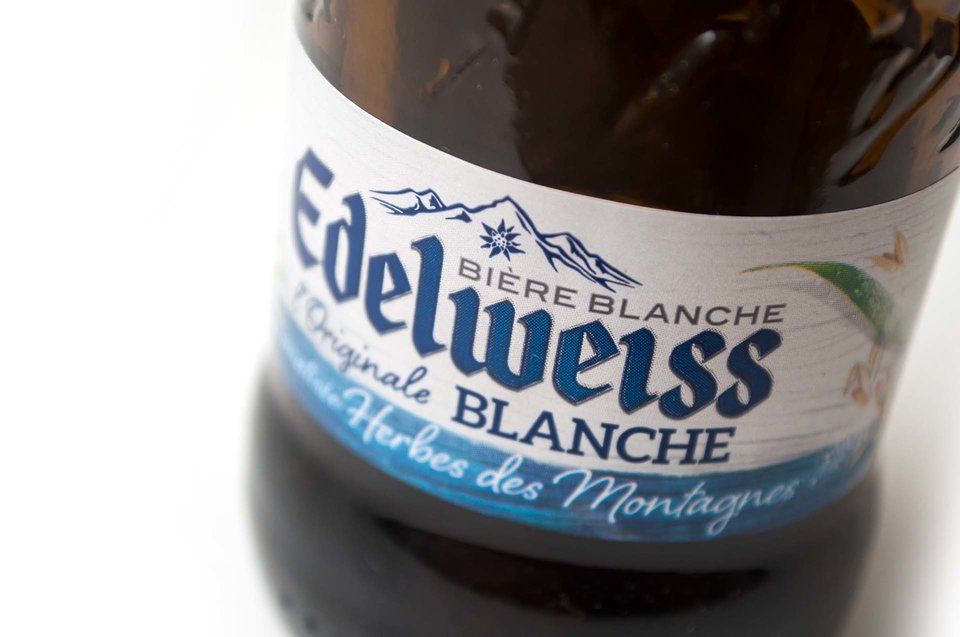
Interview
"You're less worried about who you're fighting and thinking instead 'how am I relevant?'" - Heineken's global director for international premium beer
In September, Heineken launched Edelweiss, a 4.9% wheat beer, to nine global markets including six Asian countries. Prior to the release, Just Drinks sat down with the global director of Heineken's premium beer brands portfolio, Marcelo Moller, to discuss what differentiates the Alpine-themed beer from its competitors, why a 'cookie-cutter' portfolio doesn't work for the global premium category and what motivated the brewer to launch a European-style product in East Asia.

Just Drinks: How did you recognise the potential for a wheat beer in Asia?
There is still a large risk there for every consumer goods manufacturing company because of their reliance on packaging and shipping.
Heineken global director for premium beer Marcelo Moller: Asia is really booming as a region in many aspects - its economic development has been mind-blowing over the last few years, driven by China. At the same time, Korea, Vietnam, Singapore and Malaysia are also growing very fast.
When a beer market grows, it starts to premiumise and that's when taste gains a very important role. Lager is still very big but consumers become curious about what's beyond lager.
Beer in Asia as a whole has grown at a 27% compound annual growth rate over the last three years - you don’t find that in many other markets. That's a consequence of the economical development of the region, rather than anything else, so we're very happy to join this wave of growth.
Economic development can refine tastes. In markets like India, people are gravitating towards spirits and away from beer. Is that something that you looked into when launching Edelweiss?
Consumers want different brand experiences. Ultimately, they make a choice in every single thing they drink, from water to soft drinks to beer, and they choose something that they feel connected to. That's how I see our competition - I don't say I don't think about whisky/whiskey, I think consumers will make a choice of something to drink and I want to be one of the choices they're making.
You're less worried about who you're fighting and thinking instead ‘how am I relevant?’, and ‘how am I satisfying consumers in a way that other brands are not?’.
What competitive advantage do you believe Edelweiss has over your major competitors' wheat beer brands?
We see wheat beer in two ways - traditional wheat beers, which almost always come from Germany, have been around for a very long time and play a more traditional role. Then you have modern wheat beers, some in craft, some not, but overall, playing in a much more contemporary way and language. Edelweiss is in the sweet spot between the two. We were born in the Alps and have years of tradition in brewing. On the other hand, the brand is super-modern and there's nothing traditional about it.
For a brand that promotes its 'European-ness', what was the rationale behind staying away from the major European markets?
Europe accounts for 60% of the overall wheat beer market around the world, but it's not growing as fast as other regions. The portfolios that exist in our European markets are more diverse and sophisticated than in other regions. That makes them not, per se, a natural candidate to pilot and launch new things.
Is Europe too saturated for new beer launches to make as big an impact?
I wouldn't say that in those words, but premiumisation in Europe happened earlier, since the 1980s, really, with craft beer and other trends. As a result, it creates a different dynamic for brands to enter the market.
Why did you decide to add Chile, Denmark and Russia to what is ostensibly an Asian focus for Edelweiss?
It is an Asian launch, but it’s also not. The brand is a modern wheat beer that is regionally agnostic. It's very relevant in Asia where we understand what Generation Y and others are looking for, but there are so many similarities nowadays with consumers that Generation X and Millennials in Chile, Denmark or Russia share a lot of their needs. This is particularly important regarding brand authenticity and being one that actually listens and engages with them.
Heineken’s ‘premium beer’ stable consists of Moretti, Lagunitas and now Edelweiss. Can we expect more innovations within the portfolio in the coming years?
It's a very diverse portfolio in terms of taste. What’s more, every market has a different portfolio of brands and beer styles and they don't grow the same way everywhere.
As it’s a market-by-market approach, it makes it hard to say that this portfolio will be the one that you will see everywhere. It’s more about what stage of premiumisation each market is at and what the existing portfolio consists of.
Do you think a wheat beer such as Edelweiss lends itself naturally to the opportunity for flavoured extensions down the line?
The beauty of wheat beer is that it unlocks new occasions, ones that are more mid-tempo, with food or with things that are not necessarily natural or usual for beer brands.
It also attracts a higher percentage of women than lager does. This also opens up different opportunities for a brand like Edelweiss to address new consumers’ needs. In Korea, we have Peach and Red Berries flavours of Edelweiss, which are going really well.
If the Edelweiss brand becomes very strong in Asia, is there a danger that it's going to disassociate itself from other Heineken brands within the market?
I don't think there's a risk that will happen. And, if it does, I don’t think it will be a risk either. Heineken has more than 300 brands and this is something we're very proud of. We understand that consumers are diverse and ask for different things.
We'll be very happy to see Edelweiss follow its journey to be as big as it can be if consumers are willing to choose it.
Main image: Closeup of Edelweiss bottle. Credit: NeydtStock / Shutterstock.com